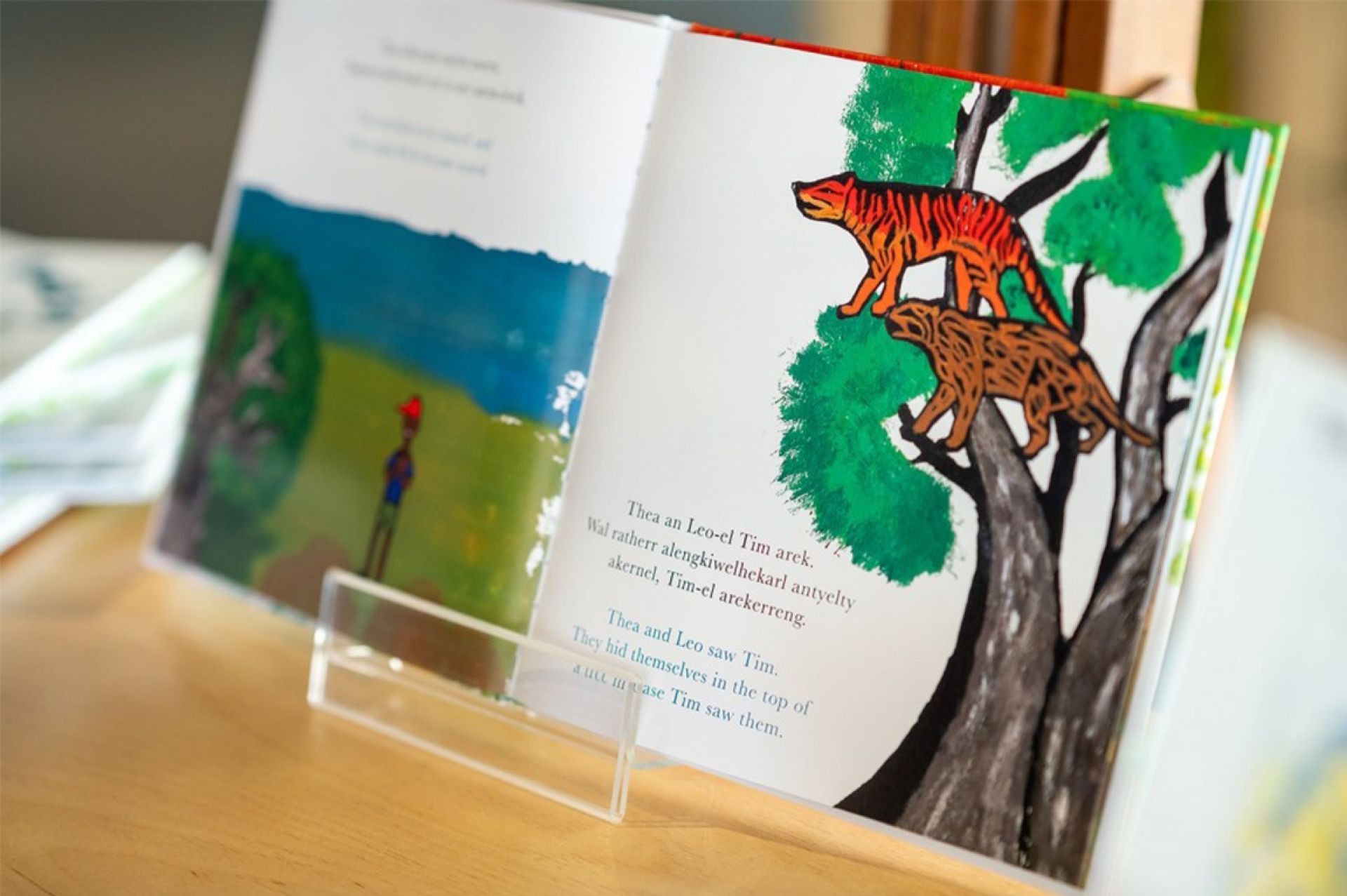

A brand new picture book, Tim’s Journey Back in Time, tells the story of the cheeky yet affable Tim, a young boy who travels back in time when he visits the Alcoota megafauna fossil site.
Along with Lopsy the Kolopsis torus, who looks like a wombat but is the size of a sheep, Tim encounters a cast of other animals while managing to escape danger and make new friends, before being transported back home to the present day.
Lopsy helps Tim as he meets Thea the Thylacinus potens, Leo the Wakaleo alcootaensis, and Deb and Doll the Dromornis stirtoni who feature as characters in the story. Following on from the fictional journey, a section at the back of the book provides scientific information about these ancient megafauna that are known to have lived in Central Australia around 8 million years ago.
The bilingual book was written and illustrated by members of the Engawala Women’s Art Group. Engawala Community, which is currently in the process of redeveloping an old store building into a new art centre and gallery, is situated only a few kilometres from the fossil site. The artists created the story while undertaking a Certificate III in Visual Arts (CUA31120) at Batchelor Institute’s Desert Peoples Centre campus in Alice Springs.
The resulting book was a collaborative effort between Engawala Arts Centre, the Museum and Art Gallery of the Northern Territory (MAGNT), Batchelor’s Visual Arts program, and Batchelor’s Centre for Australian Languages and Linguistics which supported the translation of the story. The work was funded by the Australian Government’s Indigenous Languages and Arts program as an International Decade of Indigenous Languages project.
In collaboration with the Northern Territory Department of Education, 300 copies of the book will be distributed to Central Australian schools and educational programs on Arandic language (Anmatyerr, Kaytetye, Alyawarr, Arrernte, Western Arrarnta, and Pertame), supporting the goal of increasing access to locally relevant reading material in the first language, or closely related language, of these communities.
The book was launched on 12 November 2022 at Megafauna Central in Alice Springs, a MAGNT venue which highlights the unique megafauna of the Alcoota Scientific Reserve. The remains of 30 species and around 3,000 individual animals have so far been found at Alcoota, where regular palaeontological digs continue to take place.
Attendees at the launch enjoyed a live reading of the book, a discussion of the collaborative process of developing the story, and the opportunity to view and purchase a range of Engawala artworks, as well as learning about a partial Dromornis skeleton discovered at Alcoota that was named after the book’s character Deb.
In the previous year, the story was also produced as an animated film, featuring the art group’s illustrations and Eastern Anmatyerr narration with bilingual subtitles.
